Share the post "Direct Vs. Indirect Free Kick (Soccer Rules + Examples)"
The opposing team will be given a free kick when a team fouls in soccer. Let’s look at a free kick, the different types of a free kick, and how they’re applied in soccer. These rules are hugely important in the game and fascinating to know – By the end of this article, you’ll be in the know.
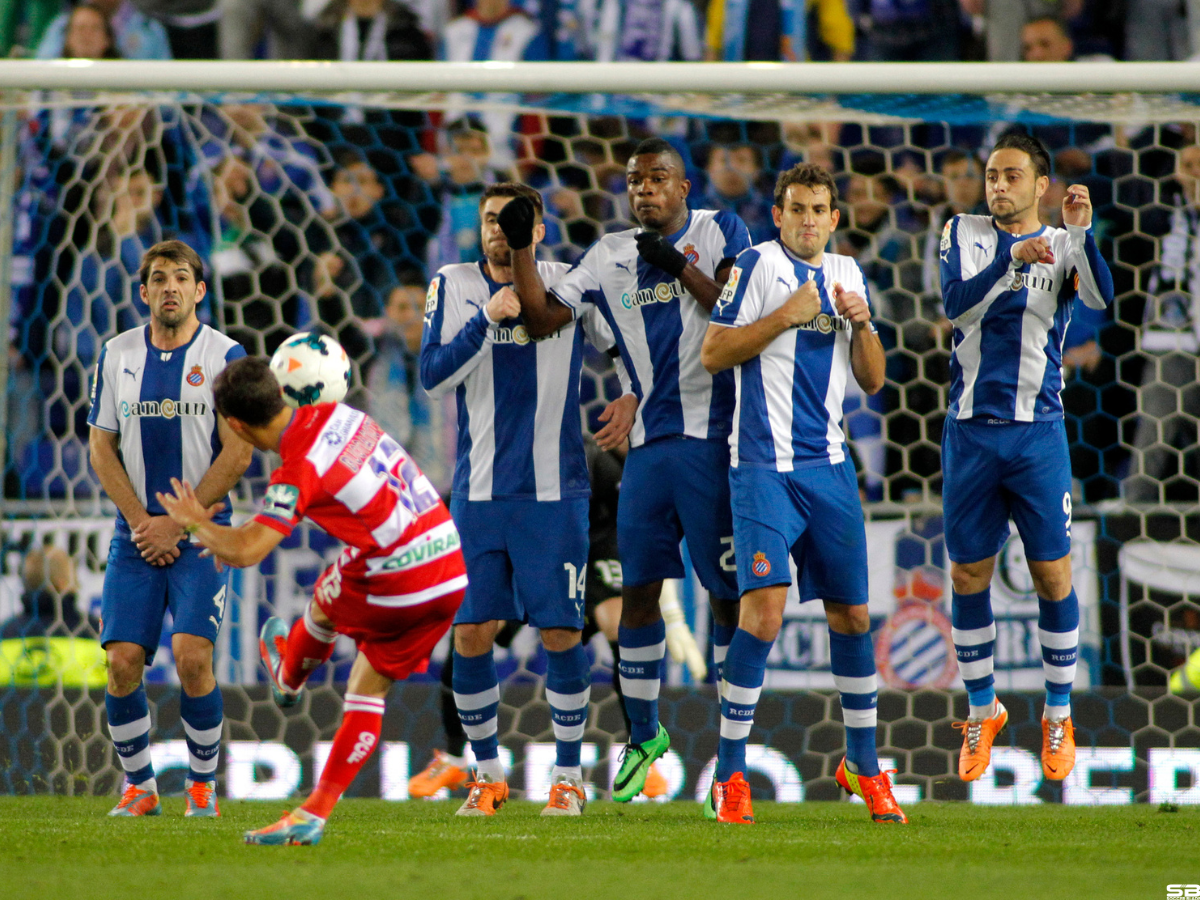
What is a free kick in soccer?
A free-kick in soccer restarts the game after a team commits a foul. A foul is an offense and is against soccer laws. The opposition stands 10 yards away from the ball for the kick to be taken. A ‘free kick’ is exactly how it sounds. A player gets to kick the ball without any players opposing them.
A free-kick means players have time and space to kick the ball how they want. Players on the opposing team can’t try to tackle for the ball when it’s a free kick. They have to stay away from the ball 10 yards until it’s kicked. Once the ball is kicked, the game restarts.
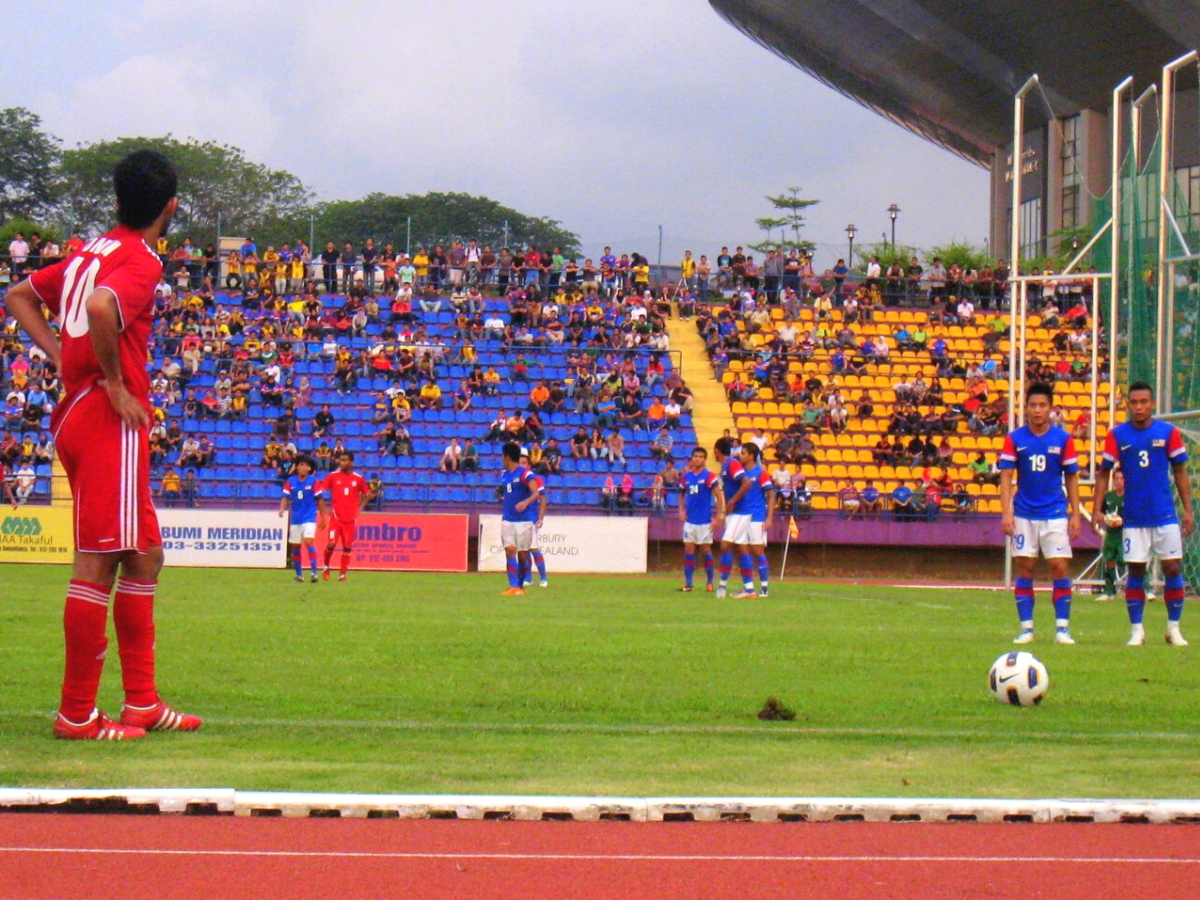
How many types of free kicks are there?
There are two types of free kicks in soccer: direct free kicks and indirect free kicks. Based on the player’s foul, the referee decides if it’s a direct or indirect free kick.
What’s the difference between a direct and indirect kick?
A direct kick means a player can take a direct shot at the goal and score, while an indirect kick means another player must touch the ball before a goal can be scored. So, a player can shoot directly for a goal from a direct kick.
Direct free kicks
rules
When the referee gives a direct free kick, five main rules apply:
1. The kick must be taken from where the foul was committed.
When watching a soccer game, you’ll often see the referee marking the position of a foul. This shows where the foul happened and where the free kick should be taken from.
2. The ball must be stationary when the kick is taken.
You’ll see the player setting the ball down for a free kick and stepping back. That’s because the ball can’t be moving when taking the kick. If it’s moving, the referee will make the player retake the kick.
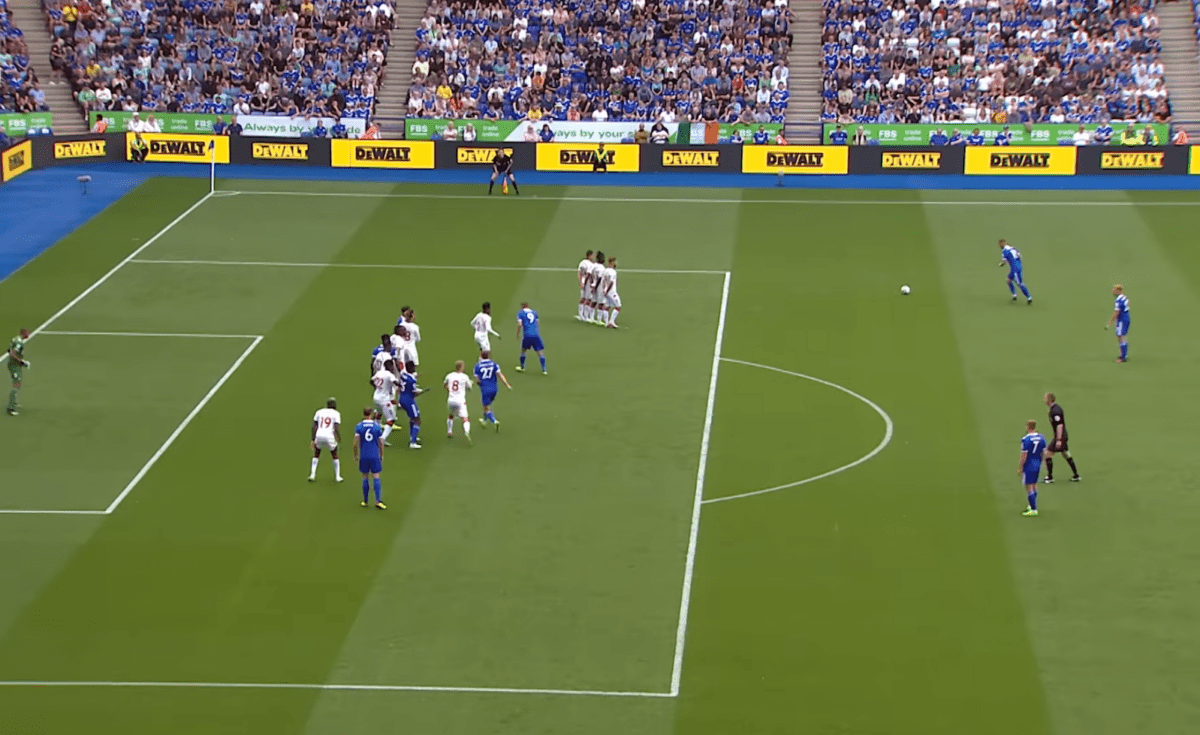
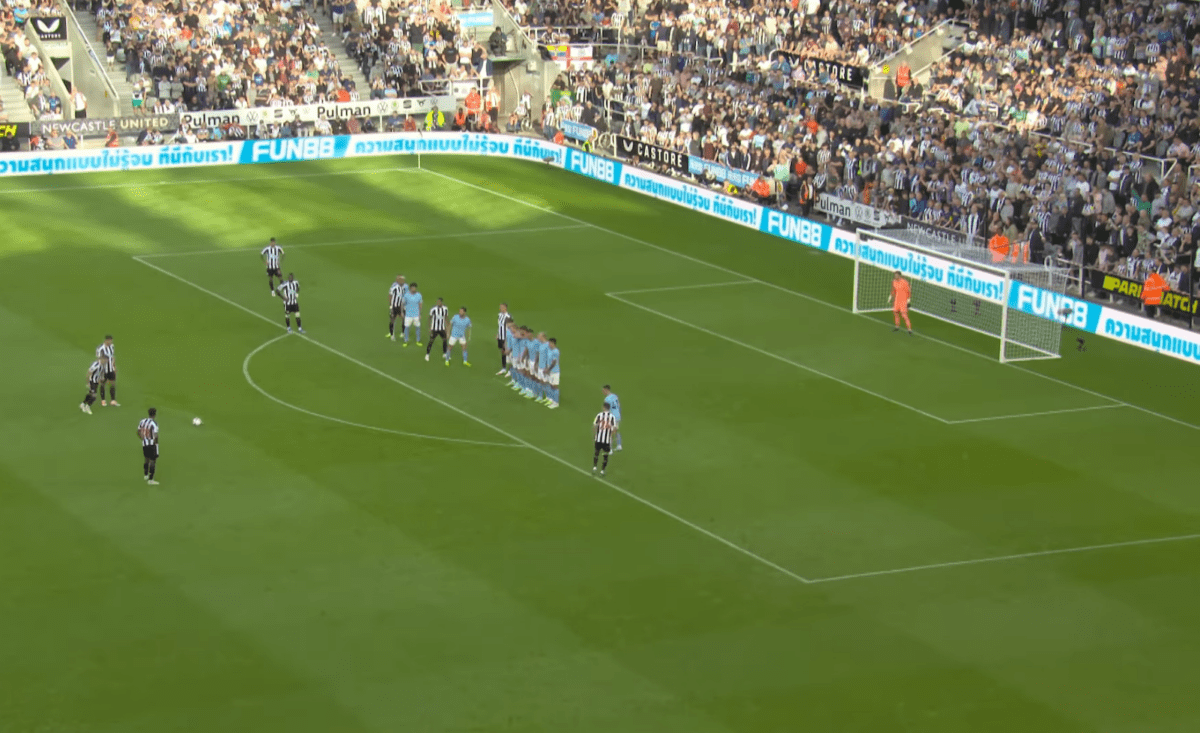
3. Opposing players must be 10 yards from the ball.
Often, you’ll see referees counting out steps from the free-kick position. It means they’re counting 10 yards so the opposing players won’t be too close to the free-kick taker.
4. The free kick taker can only touch the ball once.
The kicker can’t touch the ball and then shoot. They can only take one touch, the free kick. Once the ball touches another player, the free-kick taker can touch it again. This prevents players from passing to themselves and shooting for a goal.
5. The free kick taker can shoot directly for a goal or pass the ball.
A direct kick means the player can shoot directly for a goal. But they don’t have to. It’s their choice. They can pass the ball or cross the ball if they want to.
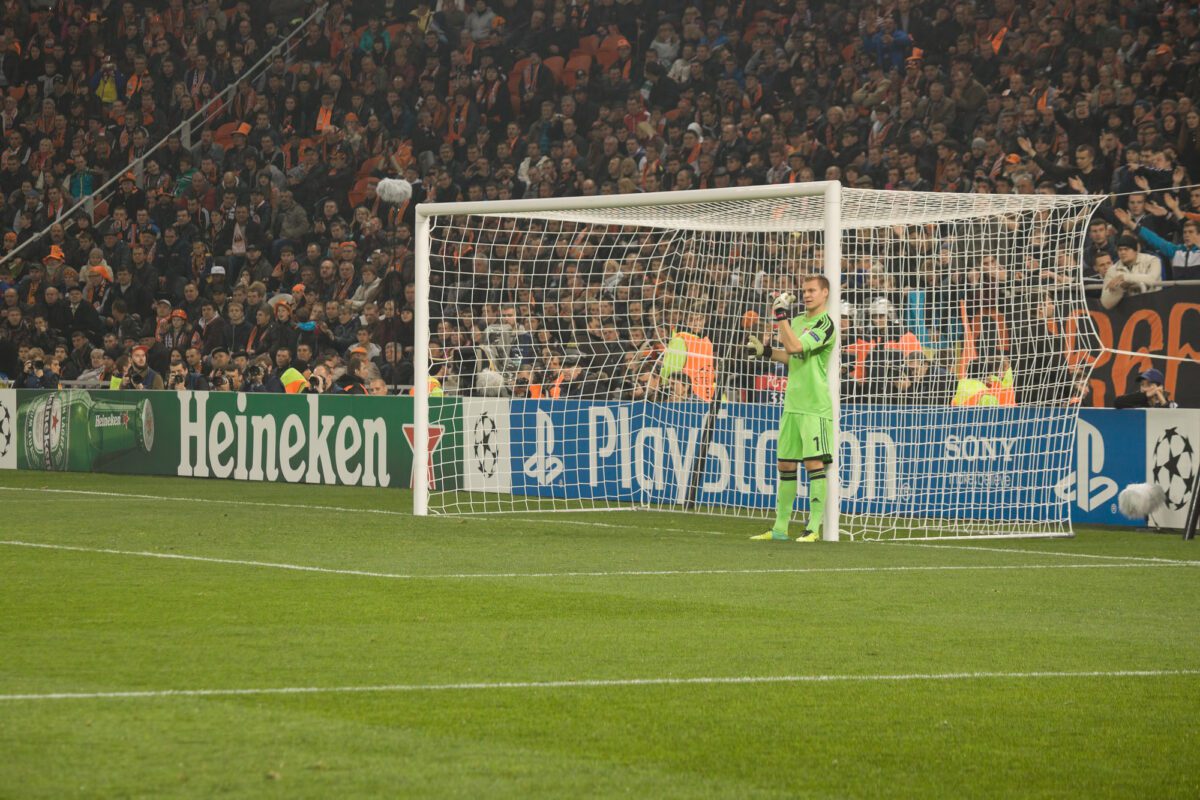
What fouls are direct kicks in soccer?
There are 7 main fouls result in direct kicks. A referee gives direct kicks if a player is careless, reckless, or uses excessive force when committing these fouls:
- Kicking or trying to kick an opponent
- Tripping or trying to trip an opponent
- Jumping toward an opponent
- Charging at an opponent
- Striking or trying to strike an opponent
- Pushing an opponent
- Tackling an opponent
There are 3 more offenses where a direct kick is given:
- Holding an opponent
- Spitting at an opponent
- Deliberately handling the ball (including goalkeepers when outside their 18-yard box)
These last three offenses are more straightforward because the referee doesn’t have to decide if they’re careless, reckless, or excessive.
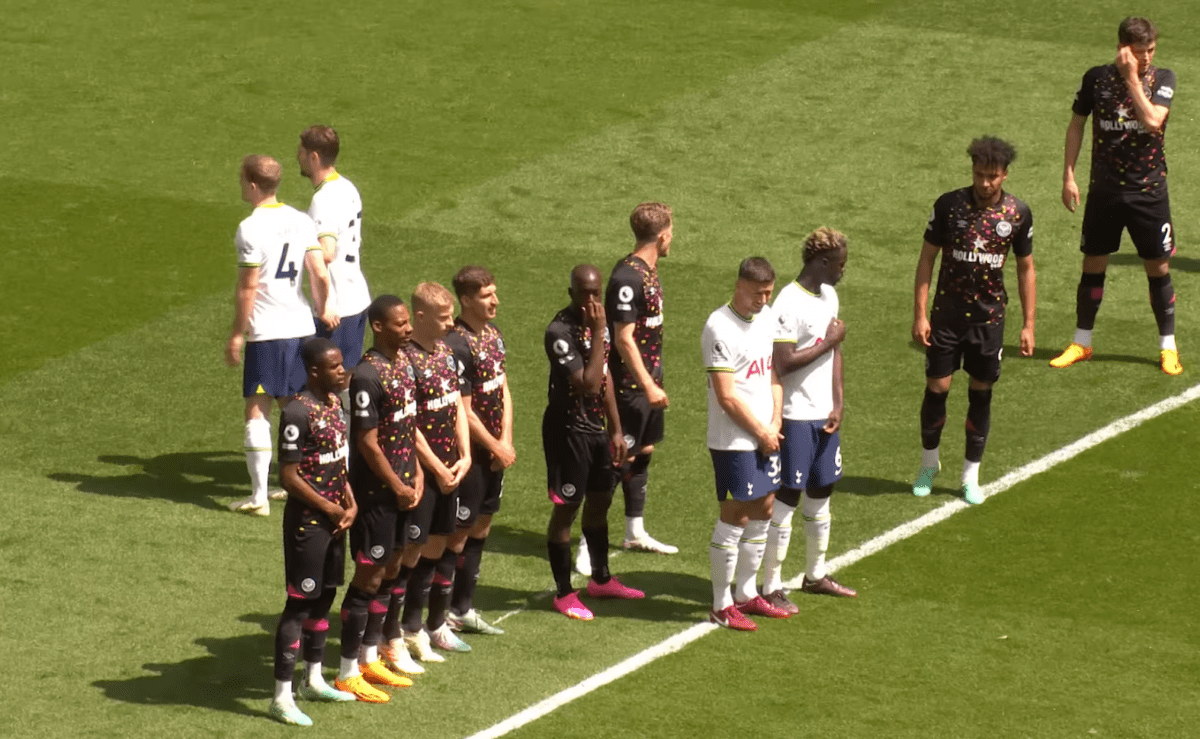
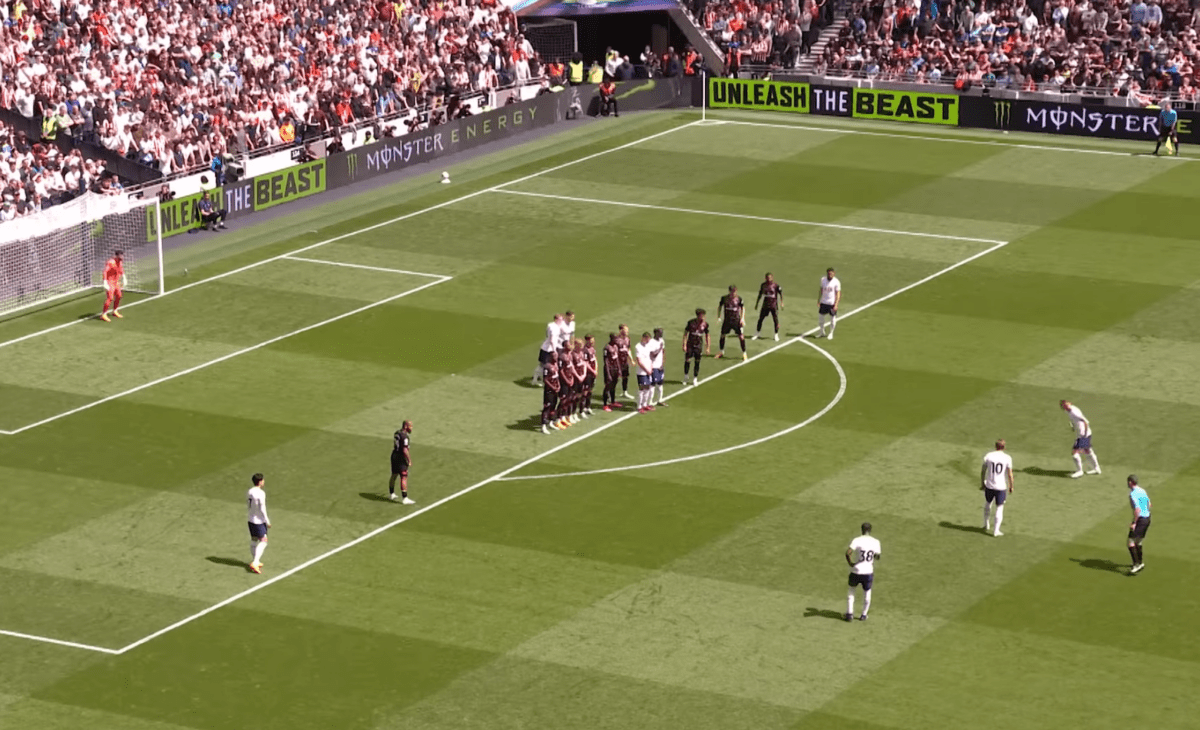
When is a direct kick awarded in soccer?
A direct kick is awarded in soccer if a player is careless, reckless, or uses excessive force during a game. This usually happens when a player tries to get the ball from an opposing player.
But a direct kick is also awarded for holding an opponent, spitting at an opponent, or handling the ball deliberately. A referee will always give a direct kick for those three offenses. You’ll know it’s a direct free kick when the referee points his arm forward.
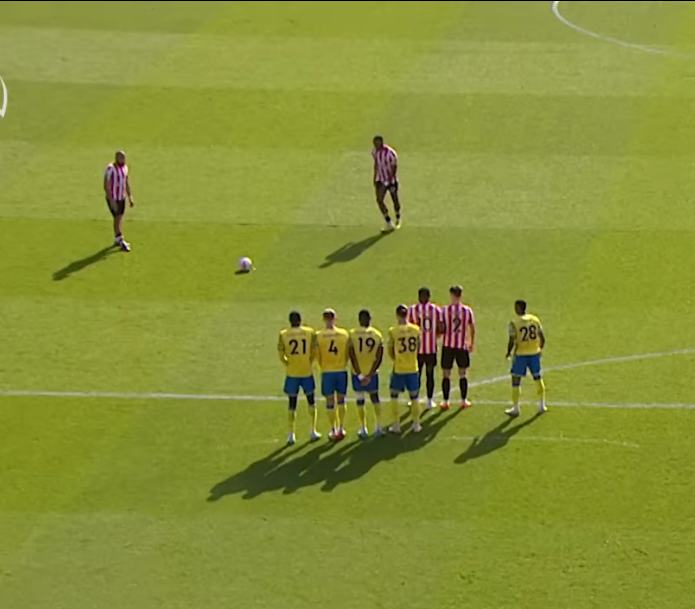
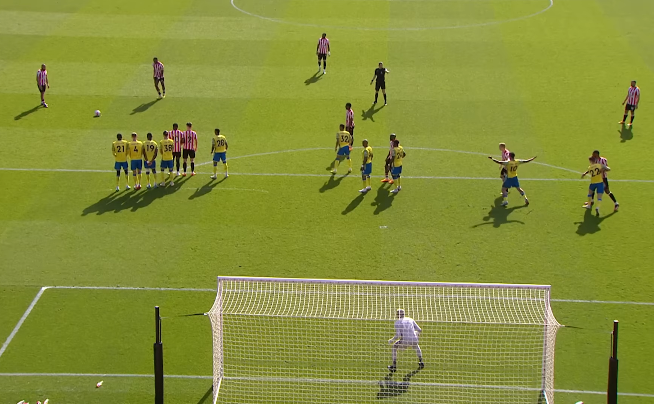
How to Take a Direct Free Kick
Direct free kicks allow a shot on goal without the ball needing to touch another player first. They are often taken by skilled players who can accurately place the ball. Common strategies include:
- Wall Management: The defending team forms a wall to block the most direct route to the goal. The kicker may aim to curl the ball over, around the wall, or even under it if it jumps.
- Power vs. Placement: The kicker must decide whether to use power to blast the ball through the wall or placement to curve it around the wall or into a top corner.
- Decoy Runners: Multiple players may line up as potential kickers, creating uncertainty for the defending team. Decoy runners can also disrupt the wall or goalkeeper’s view.
- Rebounds and Follow-ups: Teammates position themselves to capitalize on rebounds from the goalkeeper or deflections from the wall.
- Surprise Elements: Occasionally, a quick, unexpected pass to a teammate can catch the defense off guard, leading to a shot on goal.
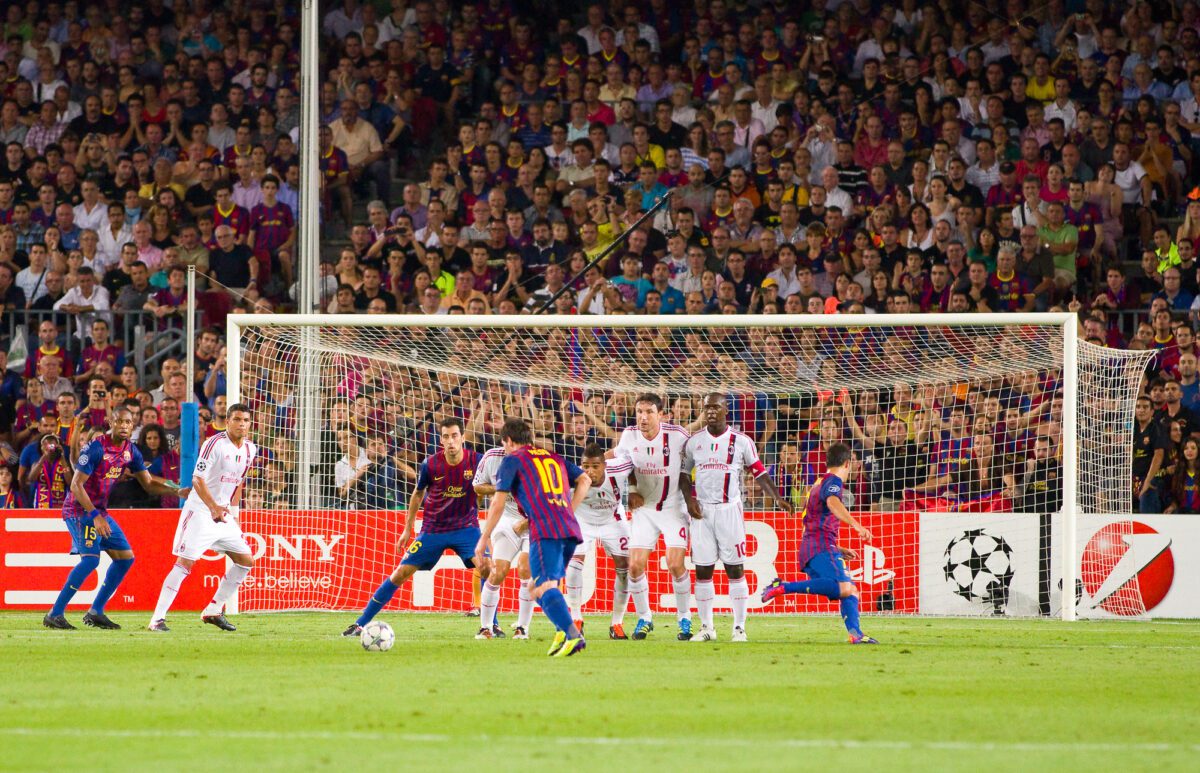
Indirect free kicks
definition
An indirect free-kick means a goal can’t be scored unless another player touches the ball after the kick. So, the player taking the indirect free kick can’t shoot directly for a goal. If a player shoots and scores from an indirect free-kick, the goal won’t count. The opposing team will be given a goal kick.
But if a player taking an indirect free kick passes to another player, and that player scores a goal, the goal will count. An indirect free kick means passing the ball before a goal can be scored.
Do indirect free kicks still exist?
Yes, indirect free kicks still exist. Indirect free kicks are most noticeable inside the defending team’s 18-yard box.
The next time you watch a soccer game, you’ll know it’s an indirect free kick when the referee raises their arm. They won’t take their arm down until another player touches the ball or it goes out of play. You’ll see that indirect free kicks still exist when you see that signal.
Like here: This type of free-kick will be mainly given when a goalkeeper picks up a backpass. But indirect free kicks can be given anywhere on the soccer field. The referee will signal for an indirect free kick.
Is a high foot an indirect free kick?
Yes, a high foot is an indirect free kick. A high foot would be considered dangerous play. Also, it could impede the progress of an opponent without any contact being made. Those are two things, of many, that result in an indirect free-kick.
Let’s look at an example where a high foot would result in an indirect free-kick. It’s dangerous to play in one outcome, and another, it’s impeding an opponent.
- Firstly, a player hits a high ball towards the opposing 18-yard box. A defender jumps up to head the ball away, while an attacker jumps up to control the ball with his foot.
The defender heads the ball away without getting hurt, but the referee blows the whistle. It’s an indirect free-kick because the high foot could hurt the defender. It’s ‘dangerous play’ from the attacker.
- The same play happens, but the defender sees the high foot coming this time. He stops going for the ball in case he gets hurt.
The attacker controls the ball and shoots at the goal, but the referee blows the whistle. It’s an indirect free kick because the high foot stopped the defender from getting the ball. Even though there’s no contact, the high foot impeded the defender’s progress.
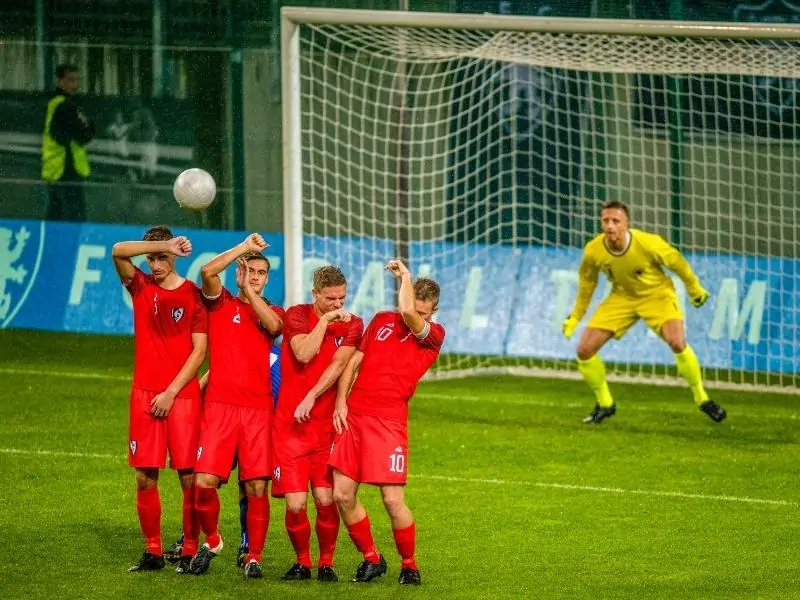
What fouls are indirect kicks in soccer?
According to the IFAB, 10 main fouls are indirect kicks in soccer. These can be broken into 2 sections: overall play and inside a goalkeeper’s 18-yard box.
Overall play
An indirect kick is awarded for:
- Offside
- Dangerous play
- Play that impedes an opponent without making contact
- Dissent, using offensive, insulting, or abusive language, actions, or other verbal offenses
- Stopping the goalie from kicking the ball from their hands or kicking/trying to kick the ball when the goalie is releasing it
- Setting up a back pass. For instance, a player flicking the ball into the air for themselves so they can head it back to the goalie
Inside a goalkeeper’s 18-yard box
An indirect free kick is awarded if the goalie:
- Holds the ball for more than 6 seconds before releasing it
- Handles the ball after releasing it and before another player has touched it
- Handles the ball when a teammate deliberately passes to them, a back pass
- Handles the ball from a teammate’s throw-in
These are the 10 main fouls you’ll see an indirect free kick given for.
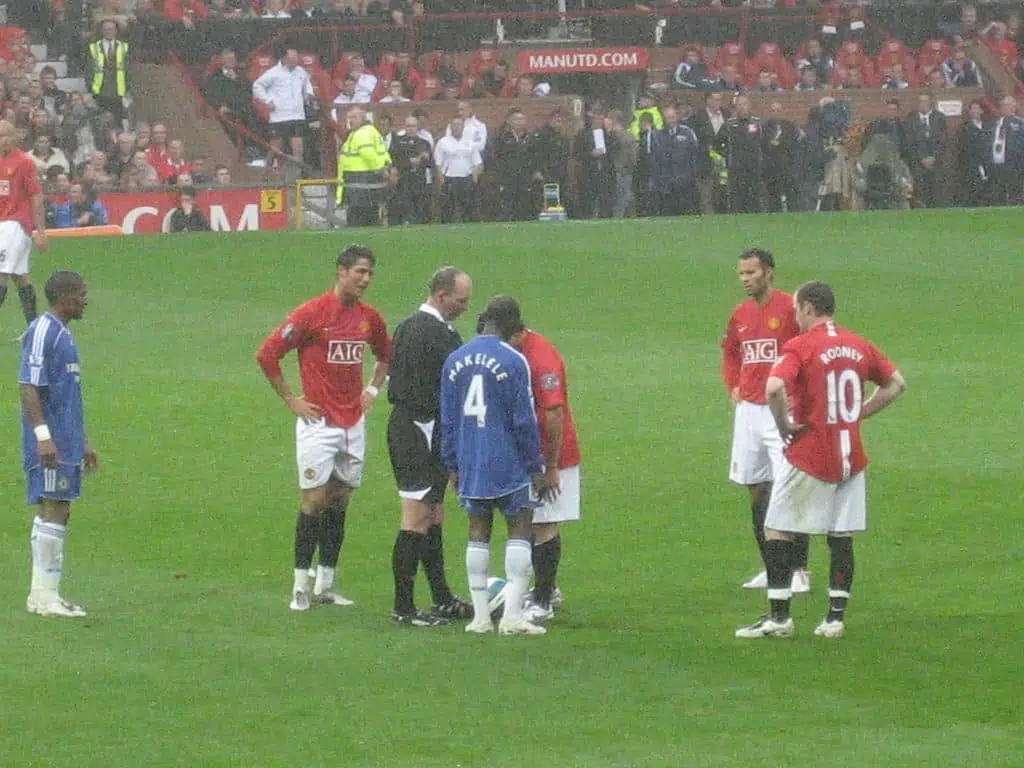
Indirect free kick Rules
Indirect free kick rules are the same as the first 4 direct free kick rules already listed:
- The kick must be taken from where the foul was committed.
- The ball must be stationary when the kick is taken.
- Opposing players must be 10 yards from the ball.
- The free kick taker can only touch the ball once.
But it’s the 5th rule that makes the difference.
- The free kick taker can’t shoot directly for a goal.
The important difference with an indirect free kick is that the player taking the kick can’t shoot directly for a goal. If a player kicks the ball into the goal directly from an indirect kick, the goal won’t count. It’ll be a goal kick for the opposing team.
So, the ball must touch another player before a goal can be scored. That means an indirect free kick is usually passed to a teammate for them to shoot if it’s close to the goal. If it’s far from the goal, the player taking the kick usually passes to a teammate to restart the game.
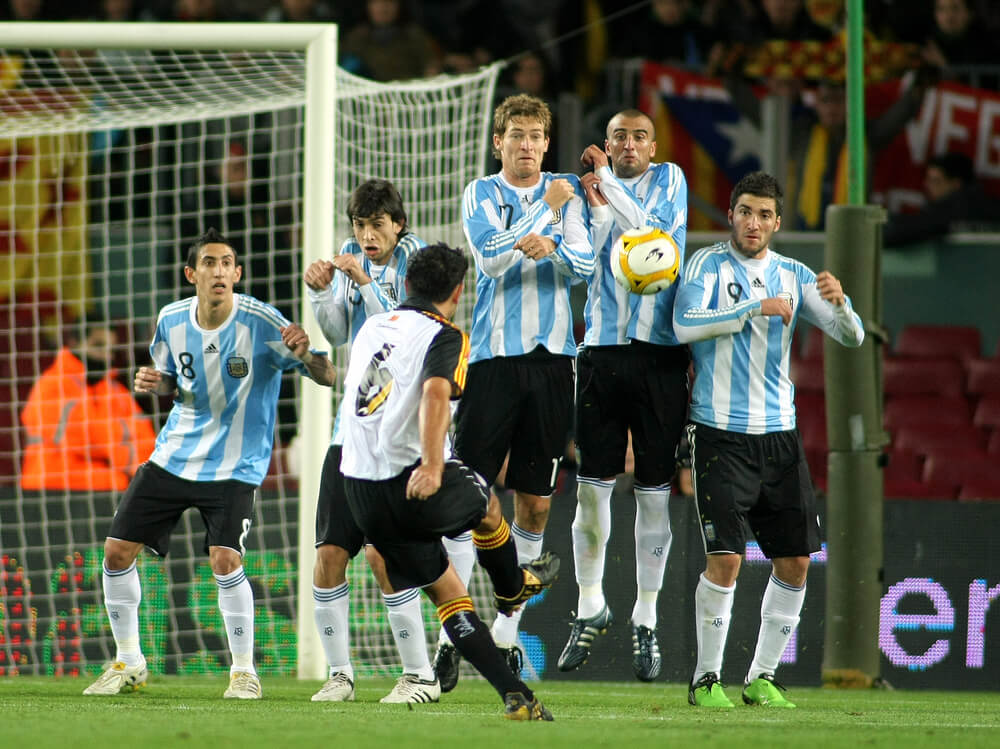
How to Take an Indirect Free Kick
Indirect free kicks require the ball to touch another player before a goal can be scored. They often involve tactical plays designed to create scoring opportunities:
- Layoff Passes: A common technique is a short pass to a teammate who then takes a shot at goal, as the ball only needs to touch another player.
- Chipped Passes into the Box: The kicker may loft the ball into the penalty area, aiming for teammates to head or volley it towards the goal.
- Combination Plays: Teams may use a series of passes to disrupt the defensive setup and create a better shooting angle.
- Utilizing Offside Trap: Attackers must time their runs perfectly to avoid being offside, especially when the ball is played into the penalty area.
- Creating Confusion: Similar to direct kicks, having multiple potential kickers and using decoy runs can create confusion and openings.
Indirect free kick in the box
An indirect free kick in the box usually happens when the goalie does one of the 4 fouls in the Inside a goalkeeper’s 18-yard box section. When committed inside their 18-yard box, the goalie will give away an indirect free kick in the box.
The usual rules apply for indirect kicks in the box, except the opposing players don’t have to stay 10 yards away from the ball. That’s because there usually won’t be enough space for a 10-yard distance when it’s in the box.
The free-kick taker still can’t shoot directly for a goal. Because the indirect kicktaker has to pass, and every player in the opposing team can defend the goal, indirect free kicks in the box can be chaotic. You can see that in a Bundesliga game between Hertha Berlin and Bayer Leverkusen here:
That chaos makes indirect free kicks in the box super exciting. You never know where the ball could end up. Direct or indirect free-kicks are a particular part of the game; you’ll know more than most about them now.
Direct Vs. Indirect Free Kick (Table Overview)
That’s a lot to take in, so for a summary, here’s a table to show the differences side-by-side:
| Aspect | Direct Free Kick | Indirect Free Kick |
|---|---|---|
| Definition | A free kick from which a player can directly score a goal without the ball touching another player. | A free kick where the ball must touch another player before a goal can be scored. |
| Awarded For | Fouls deemed more serious, such as holding, pushing, kicking, or tripping an opponent. | Lesser offenses, like playing in a dangerous manner, impeding an opponent, or the goalkeeper holding the ball for more than 6 seconds. |
| Scoring | Can directly result in a goal. | Cannot directly result in a goal; another player must touch the ball first. |
| Signal | No specific signal by the referee other than pointing to the spot of the foul. | The referee raises an arm above their head to indicate an indirect free kick. |
| Wall Formation | Defenders often form a wall to block the kick. | A wall may be formed, but it’s less common as the ball cannot be shot directly into the goal. |
| Tactics | Often taken by a skilled player aiming for goal; can involve power shots or precision placement. | Usually involves tactical plays like short passes, chipped balls into the box, or combination plays. |
| Player Positioning | Attackers position for rebounds or deflections; defenders form a wall and mark opponents. | Lesser offenses, like playing dangerously, impeding an opponent, or the goalkeeper holding the ball for more than 6 seconds. |
| Common Distance | Typically taken closer to the goal, especially for fouls within shooting range. | Can occur at various distances, often used to restart play after minor infractions. |
| Offside Rules | Offside rules apply as usual. | Offside rules apply; attackers must be careful with their positioning. |
| Referee’s Role | Ensures the defending team is at least 10 yards away; observes for any infractions. | Indicates it’s an indirect kick; ensures compliance with the rules, especially the two-touch rule. |
Now, take a look at some of the best free kick takers of all time:
Share the post "Direct Vs. Indirect Free Kick (Soccer Rules + Examples)"
Joel is a seasoned soccer journalist and analyst with many years of experience in the field. Joel specializes in game analysis, player profiles, transfer news, and has a keen eye for the tactical nuances of the game. He played at various levels in the game and coached teams - he is happy to share his insight with you.



